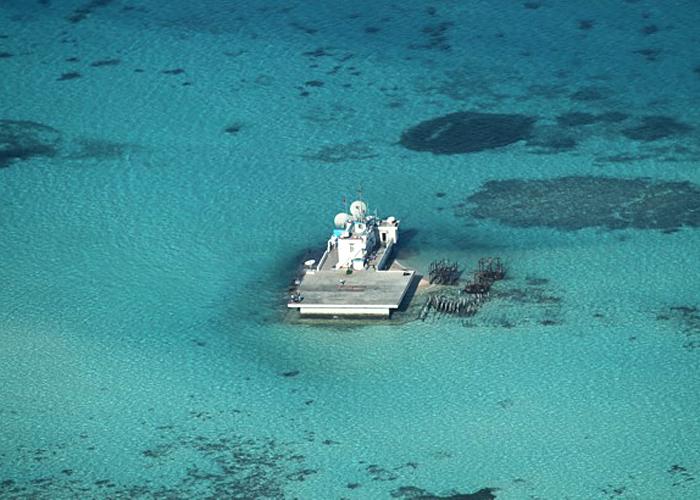
The "abrasive" move and China's long-term attempt
China’s East Sea policy has a clear delineation between short term and long term.
The strategy to maintain a continuous presence in the undisputed waters to gradually turn them into disputed areas has been resolutely pursued by Beijing. The 981 oil rig incident is a typical example. China used this oil rig as a "mobile sovereignty landmark " to maintain its presence in the undisputed waters, even in the areas that are completely within the exclusive economic zone of its neighboring countries.
The objective of turning from "no dispute" to "dispute", from "theirs" to "ours", have been implemented in accordance with the motto of the Chinese people, "What is mine is mine, what's yours, we can negotiate."
Along with that move, China’s strengthening and expansion of the construction of artificial islands has shown their long-term strategic calculations in the East Sea. The 981 oil rig is a pretty risky move, but it is substantially easier to manage and attract the support of the international community for a small country like Vietnam. Meanwhile, though it takes place slowly and is difficult to identify, the artificial island building strategy is more dangerous.

China conducts illegal construction activities on Gac Ma (Johnson South Reef) of the Truong Sa Archipelago (Spratly Islands) of Vietnam. Photo: Armed Forces of the Philippines/BBC.
Another way to evaluate China’s East Sea strategy is through changes of targets in certain stages. These are intentional changes. We will see the same thing when considering China's maritime strategy from 2009 to present. For example, how could China say that the Declaration on the Conduct of Parties in the South China Sea (DOC) - signed in 2002 and the guidelines for implementing the DOC signed in 2011 – would be the lodestar navigation of the parties, when the use of force is still a key tool in Beijing's policy.
Currently, what we can see most clearly in China's steps are the consistency of the overall goal to increase the ability to control the entire East Sea. What is not clear is the specific objectives and tasks that every single department of China will perform.
This is considered the main difficulty, because Vietnam in particular and more broadly, the ASEAN countries and the international community in general, will find it difficult to know in detail what the Chinese agencies in charge of the East Sea will do what, when and where.
Keep calm
Therefore, Vietnam should not be so focused on predicting the short-term and specific goals of China, but on learning about the nature and long-term strategy of China.
Vietnam should probably determine the correct perspective and develop a comprehensive strategy for the East Sea before going into each small act of China. From there, from the overall view, Vietnam can build detailed objectives and plans for each phase.
This raises the need to focus on building a long-term and overall strategy to deal with the long-term goal of China. A sound strategy with clear objectives and specific division of tasks will help ensure efficient utilization of resources within and outside the country, thereby creating advantages in the field and on the negotiating table. Without an overall strategy, Vietnam will be unable to cope with the inconsistent statements and actions of China.